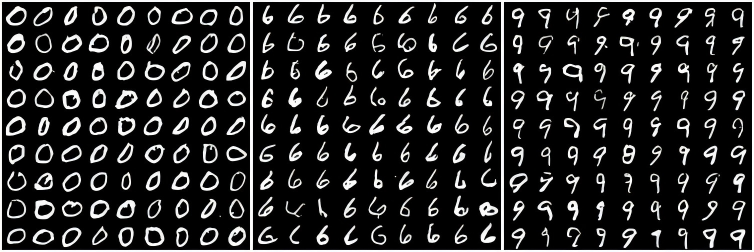1
2
3
4
5
6
7
8
9
10
11
12
13
14
15
16
17
18
19
20
21
22
23
24
25
26
27
28
29
30
31
32
33
34
35
36
37
38
39
40
41
42
43
44
45
46
47
48
49
50
51
52
53
54
55
56
57
58
59
60
61
62
63
64
65
66
67
68
69
70
71
72
73
74
75
76
77
78
79
80
81
82
83
84
85
86
87
88
89
90
91
92
93
94
95
96
97
98
99
100
101
102
103
104
105
106
107
108
109
110
111
112
113
114
115
116
117
118
119
120
121
122
123
124
125
126
127
128
129
130
131
132
133
134
135
136
137
138
139
140
141
142
143
144
145
146
147
148
149
150
151
152
153
154
155
156
157
158
159
160
161
162
163
164
165
166
167
168
169
170
171
172
173
174
175
176
177
178
179
180
181
182
183
184
185
186
187
188
189
190
191
192
193
194
195
196
197
198
199
200
201
202
203
204
205
206
207
208
209
210
211
212
213
214
215
216
217
218
219
220
221
222
223
224
225
226
227
228
229
| import torch
import torch.nn as nn
import torch.nn.functional as F
import yaml
with open('options.yml', 'r') as f:
opt = yaml.safe_load(f)
img_shape = opt['dataset']['img_shape'][opt['dataset']['name']]
class PositionalEncoding(nn.Module):
def __init__(self,
max_seq_len: int,
d_model: int,
n_classes: int=None):
super().__init__()
assert d_model % 2 == 0
pe = torch.zeros(max_seq_len, d_model)
i_seq = torch.linspace(0, max_seq_len - 1, max_seq_len)
j_seq = torch.linspace(0, d_model - 2, d_model // 2)
pos, two_i = torch.meshgrid(i_seq, j_seq)
pe_2i = torch.sin(pos / 1e4 ** (two_i / d_model))
pe_2i_1 = torch.cos(pos / 1e4 ** (two_i / d_model))
pe = torch.stack((pe_2i, pe_2i_1), 2).reshape(max_seq_len, d_model)
self.t_embedding = nn.Embedding(max_seq_len, d_model)
self.t_embedding.weight.data = pe
self.t_embedding.requires_grad_(False)
self.use_condition = n_classes is not None
if self.use_condition:
self.label_embedding = nn.Embedding(n_classes, d_model)
def forward(self, t, label=None):
t_emb = self.t_embedding(t)
if self.use_condition and label is not None:
label_emb = self.label_embedding(label)
return t_emb + label_emb
return t_emb
class SelfAttention(nn.Module):
def __init__(self, channels: int, num_heads: int):
super().__init__()
self.channels = channels
self.mha = nn.MultiheadAttention(channels, num_heads, batch_first=True)
self.ln = nn.LayerNorm([channels])
self.ff_self = nn.Sequential(
nn.LayerNorm([channels]),
nn.Linear(channels, channels),
nn.GELU(),
nn.Linear(channels, channels),
)
def forward(self, x: torch.Tensor):
size = x.shape[-2:]
x = x.view(x.shape[0], self.channels, -1).transpose(1, 2)
x_ln = self.ln(x)
attention_value, _ = self.mha(x_ln, x_ln, x_ln)
attention_value = attention_value + x
attention_value = self.ff_self(attention_value) + attention_value
return attention_value.transpose(1, 2).view(x.shape[0], self.channels, *size)
class UNetBlock(nn.Module):
def __init__(self,
shape,
in_c,
out_c,
residual=False):
super().__init__()
self.ln = nn.LayerNorm(shape)
self.conv1 = nn.Conv2d(in_c, out_c, kernel_size=3, stride=1, padding=1)
self.conv2 = nn.Conv2d(out_c, out_c, kernel_size=3, stride=1, padding=1)
self.activation = nn.ReLU()
self.residual = residual
if residual:
if in_c == out_c:
self.residual_conv = nn.Identity()
else:
self.residual_conv = nn.Conv2d(in_c, out_c, kernel_size=1)
def forward(self, x):
out = self.activation(self.conv1(self.ln(x)))
out = self.conv2(out)
if self.residual:
out += self.residual_conv(x)
out = self.activation(out)
return out
class UNet(nn.Module):
def __init__(self,
n_steps: int,
channels: list=[10, 20, 40, 80],
pe_dim: int=10,
residual: bool=False,
n_classes: int=10,
use_attention: bool = True):
super().__init__()
C, H, W = img_shape[0], img_shape[1], img_shape[2]
n_layers = len(channels)
Hs = [H]
Ws = [W]
cH = H
cW = W
for _ in range(n_layers - 1):
cH //= 2
cW //= 2
Hs.append(cH)
Ws.append(cW)
self.pe = PositionalEncoding(n_steps, pe_dim, n_classes)
self.encoders = nn.ModuleList()
self.decoders = nn.ModuleList()
self.pe_linears_en = nn.ModuleList()
self.pe_linears_de = nn.ModuleList()
self.downs = nn.ModuleList()
self.ups = nn.ModuleList()
prev_channel = C
for channel, cH, cW in zip(channels[0:-1], Hs[0:-1], Ws[0:-1]):
self.pe_linears_en.append(
nn.Sequential(nn.Linear(pe_dim, prev_channel),
nn.ReLU(),
nn.Linear(prev_channel, prev_channel))
)
self.encoders.append(
nn.Sequential(
UNetBlock((prev_channel, cH, cW),
prev_channel,
channel,
residual=residual),
UNetBlock((channel, cH, cW),
channel,
channel,
residual=residual)
)
)
self.downs.append(nn.Conv2d(channel, channel, kernel_size=2, stride=2))
prev_channel = channel
self.pe_mid = nn.Linear(pe_dim, prev_channel)
channel = channels[-1]
if not use_attention:
self.mid = nn.Sequential(
UNetBlock((prev_channel, Hs[-1], Ws[-1]),
prev_channel,
channel,
residual=residual),
UNetBlock((channel, Hs[-1], Ws[-1]),
channel,
channel,
residual=residual)
)
else:
self.mid = nn.Sequential(
UNetBlock((prev_channel, Hs[-1], Ws[-1]),
prev_channel,
channel,
residual=residual),
SelfAttention(channel, 4),
UNetBlock((channel, Hs[-1], Ws[-1]),
channel,
channel,
residual=residual)
)
prev_channel = channel
for channel, cH, cW in zip(channels[-2::-1], Hs[-2::-1], Ws[-2::-1]):
self.pe_linears_de.append(nn.Linear(pe_dim, prev_channel))
self.decoders.append(
nn.Sequential(
UNetBlock((channel * 2, cH, cW),
channel * 2,
channel,
residual=residual),
UNetBlock((channel, cH, cW),
channel,
channel,
residual=residual)
)
)
self.ups.append(nn.ConvTranspose2d(prev_channel, channel, kernel_size=2, stride=2))
prev_channel = channel
self.conv_out = nn.Conv2d(prev_channel, C, kernel_size=3, stride=1, padding=1)
def forward(self, x, t, label=None):
n = t.shape[0]
t = self.pe(t, label)
encoder_outs = []
for pe_linear, encoder, down in zip(self.pe_linears_en, self.encoders, self.downs):
pe = pe_linear(t).reshape(n, -1, 1, 1)
x = encoder(x + pe)
encoder_outs.append(x)
x = down(x)
pe = self.pe_mid(t).reshape(n, -1, 1, 1)
x = self.mid(x + pe)
for pe_linear, decoder, up, encoder_out in zip(self.pe_linears_de, self.decoders,
self.ups, encoder_outs[::-1]):
pe = pe_linear(t).reshape(n, -1, 1, 1)
x = up(x)
pad_x = encoder_out.shape[2] - x.shape[2]
pad_y = encoder_out.shape[3] - x.shape[3]
x = F.pad(x,
(pad_x // 2, pad_x - pad_x//2, pad_y // 2, pad_y - pad_y//2))
x = torch.cat((encoder_out, x), dim=1)
x = decoder(x + pe)
x = self.conv_out(x)
return x
def build_network(n_steps: int,
channels: list,
pe_dim: bool=None,
residual: bool=True,
n_classes: int=10,
use_attention: bool=True):
return UNet(n_steps, channels, pe_dim, residual, n_classes, use_attention)
|




